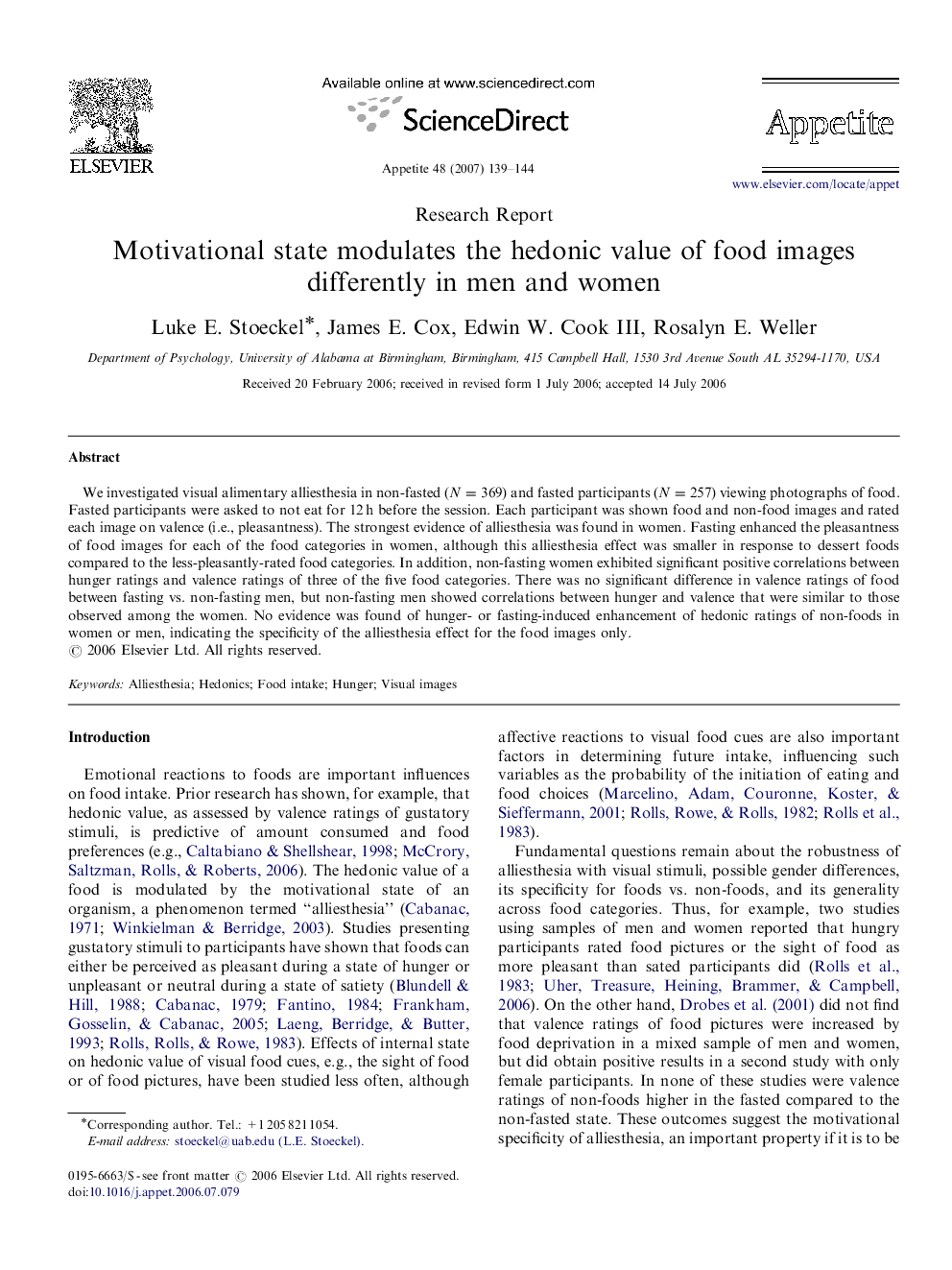| Article ID | Journal | Published Year | Pages | File Type |
|---|---|---|---|---|
| 941849 | Appetite | 2007 | 6 Pages |
We investigated visual alimentary alliesthesia in non-fasted (N=369N=369) and fasted participants (N=257N=257) viewing photographs of food. Fasted participants were asked to not eat for 12 h before the session. Each participant was shown food and non-food images and rated each image on valence (i.e., pleasantness). The strongest evidence of alliesthesia was found in women. Fasting enhanced the pleasantness of food images for each of the food categories in women, although this alliesthesia effect was smaller in response to dessert foods compared to the less-pleasantly-rated food categories. In addition, non-fasting women exhibited significant positive correlations between hunger ratings and valence ratings of three of the five food categories. There was no significant difference in valence ratings of food between fasting vs. non-fasting men, but non-fasting men showed correlations between hunger and valence that were similar to those observed among the women. No evidence was found of hunger- or fasting-induced enhancement of hedonic ratings of non-foods in women or men, indicating the specificity of the alliesthesia effect for the food images only.
